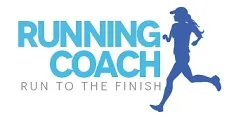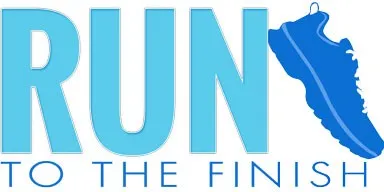Pain on the inside of your ankle near the ankle bone could be caused by posterior tibial tendonitis from running. Before jumping to any worst case scenario conclusions, let’s see how your symptoms line up. And then talk more about how we deal with tendon recovery! This is a common issue, so just know that there is also a resolution thanks to so many great Physical Therapists who have dealt with it in runners.
This is a common issue, so just know that there is also a resolution thanks to so many great Physical Therapists who have dealt with it in runners.
Symptoms of posterior tibial tendonitis:
- Ankle swelling (largely on the inside)
- Pain on the inside of your ankle (possibly some up in to the calf)
- Inability to walk on toes without pain
- Flattening of the arch and ankle rolling in (if left untreated)
Unfortunately this is another running injury that occurs from too much, too fast and too soon.
Overuse.
But that also means, there are usually steps we can take to correct it and prevent posterior tibial tendon dysfunction from occurring in the future.
What is Posterior Tibial Tendonitis?
Your posterior tibial tendon is designed to help maintain the structure of the arch in your foot and stability while you move.
It runs from your instep to up along your ankle bone and connects deep in your calf muscle.
If that sounds important, it is!
Each step you take requires a lot of muscles to work together to keep your foot from rolling inward, your arch from collapsing under the weight and your knee aligned.
This tiny little tendon is under a lot of pressure to keep your ankle locked and ready to spring on each step.
Thus when you abuse it by doing too much too soon, it becomes inflamed.
If this doesn’t sound like you, but you have pain, a few other causes of ankle pain while running:
- Sprained Ankle
- Achilles tendonitis
- Plantar fasciitis
- Stress fracture
- Peroneal Tendonitis – pain on the outside of the ankle (so the opposite of this injury)
What is the Treatment for Posterior Tibial Tendonitis?
You’ve heard me say work on your hip strength a million times, but I’m going to say it again. Before I get in to that, let’s start with some of the pain management things you can do.
YOU SHOULD SEE A DR FOR THIS.
This is an injury that left untreated can turn in to something bigger. Following are steps and exercises for non-surgical recovery of posterior tibial tendon dysfunction.
- Stop running if you are having SHARP pain
- Only use ice to inhibit pain, otherwise use heat to loosen tight muscles
- Don’t take anti-inflammatory drugs and run
- Use compression socks (my favorites)
- Foam roll calves and bottom of foot to help release tension up the leg
- Calf stretches
- Change shoes or considering a running orthotic – to support the arch
- Try taping the ankle to provide more support while healing
- Start doing strength work
That last bullet is actually the most important!!
I did a great in depth interview with a PT who specializes in tendon rehab and his biggest message is strength. You’ll find some starter exercises below, but first a few more common questions.
Can you still run with posterior tibial tendonitis?
This is one of the few times I’m going to say no. The downside to pushing this injury is potential surgery and you’d much rather a few weeks off than months.
BUT that doesn’t mean it has to be a long lay off. We know that with tendon recovery there will likely be some pain for awhile, so the goal is to ensure that you aren’t going above say a 2-3 on a scale of 10 during or after your runs.
Early on you may do something and hit a 4…so you do a little less.
Focus on what you can do to continue progressing as a runner while allowing this tendon to repair.
- Best cross training for runners – Ideas to get you started
- Focus on all the upper body and core workouts you want to
- Add in focused and smart lower body workouts to help rebuild the tendon and surrounding muscles
- Focus on anti-inflammatory eating and herbs that will help the body recover
How long is recovery from posterior tibial tendonitis?
Depending on when you stop running and start the recovery process it could be a few weeks to a few months. Again, this is not an injury to try running through it will get much worse.
Recovery timelines could be a few weeks if you caught it early to 6 to 8 months if you’ve continued pushing things.
As noted, with tendons you can’t just rest and see it get better. You must actively be working on strength and helping the body to repair. You may actually be able to do cardio like biking or even some running sooner than you think using the pain guidelines above, it just may take time to build up your distance or add in intensity.
Remember if you can only run 1 mile right now before the pain is above a 4, but next month you can do 2 miles, then you are progressing!
Focus as noted on what you CAN DO.
Listen as someone who had a knee injury that took 8 months to get to surgery, I’m very well aware you want to run. But can also promise the time you put in to those other areas will help you come back stronger and quicker.
Posterior Tibial Tendonitis Exercises
Once you’ve gone from immense pain to ready for some movement, there are a few exercises that will via strength and stretching. A visit to a Physical Therapist is a great place to get a treatment plan! Many of these moves have fancier names, but I just want you to understand what they are and do them!
As usual, we aren’t focused just on the tendon. We need to strengthen everything around it to provide enough support.
These might be the movements you start with to keep pain from ramping up above a 4, but as these start to feel better you absolutely must keep progressing the work. Using more weights or trying new movements.
#1 Resistance Band – In, Out, Up and Down
Start doing this daily.
Even twice daily, build up to 50 reps per movement

Loop a resistance band around a post and then you’ll do 3 different movements. Continue increasing the intesnity of your band to progress
- Around your instep you’ll rotate foot inward against resistance
- Around the outside of your foot you’ll rotate outward against resistance
- Around the top of your foot (across the laces) flex foot towards you against resistance
Great set of durable bands!! <<– these are what my PT uses and I have.
#2 Tennis Ball Strength
While I usually go for a PT ball, you want the slight flex of the tennis ball.
You can also do these three movements daily, start sitting and move to standing to increase pressure.
- Place heel on ball and push down (up to 1 minute)
- Place toes on ball and curl it towards you (1o reps)
#3 Stair Calf Raises
Once pain subsides can start adding this in.
Daily 10-20 reps.
Standing with heel off the back of a stair, you’ll lower the heel down and then raise up on to your toes.
- This is a single leg exercise
- You want to go slow for full range of motion – think about 2-3 seconds on the lowering phase
- Do both legs! Just do a few more on the injured side.
Once you can do 3 rounds of 10-12 reps staying below a 3-4 pain, then start holding a weight in one hand and keep progressing the weight.
You should also vary the direction that your toes are pointing. Try straight ahead, next week have them pointed out, a week after have them pointed inward.

#4 Heel Toe Walking
After that you can move on to doing this…exactly what it sounds like!
Raise up on your Tip Toes and walk forward 10 steps, then rock back on your heels and walk back to where you started.
This is a movement you will want to add in to your routine prior to all runs going forward.
Best Running Shoes for Posterior Tibial Tendonitis
In general, you’ll be looking for shoes labeled stability – you may not need to run in this type of shoe forever.
If you continue adding strength to the ankle and legs, reduce ramping up mileage too quickly then you may transition to a neutral shoe.
These are useful for support during recovery and when you first start running again.
Hopefully these steps help you get running again pain free.
Other ways to connect with Amanda
Instagram Daily Fun: RunToTheFinish
Facebook Community Chatter: RunToTheFinish
Sign Up to Receive a Weekly Newsletter with Top Running Tips and Laughs





 New Balance Balos Review | We Can Roll With This
New Balance Balos Review | We Can Roll With This
Hi Amanda!
Thank you for this great post :)
I began suffering from Posterior Tibial Tendonitis about a month and a half ago (although I didn’t quite realize that this was what I had at the beginning!) After taking a full two week break from running, my foot is feeling about 95% recovered. I mostly only have some foot weakness right after waking up in the morning.
You have mentioned in your post that you advise against running through this injury – does that mean it would be best to wait until my foot is 100% recovered to ensure that I don’t make things worse?
Thank you!
HB
Hey HB! So with most tendonitis, the recovery is really difficult if we just keep inflaming it by running. But it sounds like you did take time off! If you’re 95% probably ok to ease back in, just stop if it in any way starts to feel worse.
Thanks, Amanda!
Hi Amanda, with strength training like you advised, is it possible to retreat a healing tendon?
That’s a good question. The goal is certainly not to go super heavy immediately. It’s a slow and steady progression and paying attention to the pain level. I started out with some pretty low weight moves and have really progressed weights over the last 4 months and finally I’m almost 100%.
*I mean retear